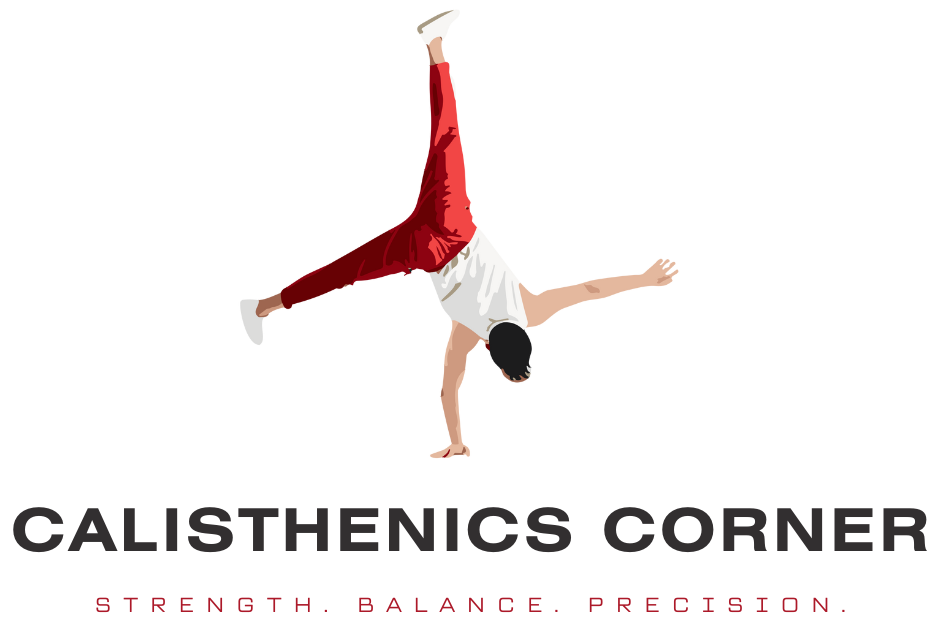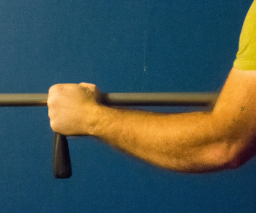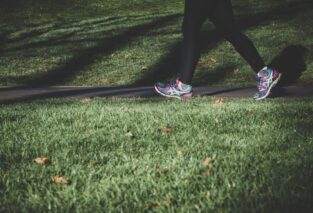If you’ve ever been amazed by the strength and agility of calisthenics athletes and wondered how you could become one yourself, look no further. This article will provide you with the essential steps and tips to embark on your journey towards becoming a calisthenics athlete. From understanding the basics of calisthenics to developing a training routine and maintaining a healthy lifestyle, you’ll discover everything you need to know to pursue this exciting and challenging discipline. So, grab your workout gear and let’s get started on your path to becoming a calisthenics athlete!
Setting Goals
Determine your specific fitness goals
Before you embark on your journey to becoming a calisthenics athlete, it is crucial to determine your specific fitness goals. Are you looking to build strength, increase flexibility, improve muscle endurance, or achieve a combination of these? Setting clear goals will help you stay focused and motivated throughout your training.
Break down your goals into SMART objectives
Once you have established your overarching fitness goals, it is essential to break them down into smaller, manageable objectives. Using the SMART (Specific, Measurable, Achievable, Relevant, Time-bound) framework can help create clear and actionable steps. For example, instead of saying, “I want to improve my upper body strength,” a SMART objective would be, “I will perform ten push-ups without assistance within three months.”
Create a timeline for achieving your goals
Having a timeline for achieving your fitness goals provides structure and accountability to your training. Determine a realistic timeframe for reaching each objective, considering factors such as your current fitness level and the desired level of improvement. Breaking down your goals into smaller milestones with specific deadlines will help you track progress and stay motivated along the way.
Building a Foundation
Assess your current fitness level
Knowing where you currently stand in terms of your fitness level is essential for developing an effective training plan. Assess your strengths and weaknesses, evaluate your mobility, strength, and endurance, and identify areas that need improvement. This self-assessment will serve as a baseline, allowing you to track your progress as you work towards becoming a calisthenics athlete.
Focus on developing basic strength and flexibility
Building a solid foundation is crucial in any athletic endeavor. As a beginner, it is essential to focus on developing basic strength and flexibility before delving into more advanced movements. Incorporate exercises like squats, lunges, push-ups, sit-ups, and planks into your routine to enhance muscular strength and improve overall flexibility.
Start with bodyweight exercises
Calisthenics is all about utilizing your bodyweight as resistance to build strength and improve fitness. Start your training journey by mastering basic bodyweight exercises such as squats, lunges, push-ups, pull-ups, and dips. These exercises will help you build foundational strength and establish proper form, setting you up for success as you progress to more challenging movements.
Progressions and Variations
Follow a progressive training program
To continually challenge your body and make progress in your calisthenics journey, it is important to follow a progressive training program. This means gradually increasing the difficulty of your exercises, adding more repetitions, sets, or incorporating more advanced variations over time. A well-structured program will ensure that you are consistently pushing your limits and avoiding plateaus.
Gradually increase the difficulty of exercises
As you become more comfortable with basic bodyweight exercises, it is crucial to gradually increase the difficulty to keep challenging your muscles. This can be achieved by adding resistance, increasing repetitions or sets, modifying leverage, or trying more advanced variations. Strive to consistently challenge yourself and push beyond your comfort zone while maintaining proper form and technique.
Experiment with different exercise variations
Calisthenics offers a vast array of exercise variations that target different muscle groups and provide exciting challenges. Experimenting with different exercise variations not only keeps your training fresh and enjoyable but also helps you develop a well-rounded physique. Incorporate movements like handstand push-ups, muscle-ups, pistol squats, and dragon flags into your routine to boost strength and versatility.
Mastering the Basics
Learn proper form and technique
Mastering proper form and technique is crucial for two reasons: safety and effectiveness. Without proper form, you risk injury and may not achieve the desired results from your training. Take the time to study and understand the correct form for each exercise you perform. Seek guidance from experienced trainers, watch instructional videos, and practice under supervision until you have a good grasp of the proper technique.
Focus on mastering essential movements
While it may be tempting to jump straight into advanced movements, mastering the essential movements is key to a successful calisthenics journey. Movements such as the push-up, pull-up, squat, and plank form the foundation for more complex exercises. Focus on performing these movements with proper form and gradually increasing the difficulty before moving on to more advanced skills.
Develop core strength
Core strength is vital in calisthenics as it provides stability, balance, and power for all movements. Make sure to incorporate exercises that target your core, such as planks, hollow holds, L-sits, and leg raises, into your training routine. A strong core will not only improve your performance in other exercises but also reduce the risk of injuries.
Structuring Your Training
Create a balanced workout routine
Designing a balanced workout routine is crucial for overall progress and injury prevention. Incorporate exercises that target different muscle groups and movement patterns to ensure balanced development. Include upper body, lower body, and core exercises, as well as exercises that promote mobility and flexibility. Strive for a well-rounded routine that addresses all aspects of fitness.
Incorporate strength training and cardio exercises
Calisthenics training should encompass both strength training and cardiovascular exercises. Strength training builds muscle, improves bone density, and enhances overall body composition, while cardiovascular exercises boost endurance and burn calories. Incorporate exercises like push-ups, squats, lunges, jump rope, running, or cycling to create a well-rounded training program.
Include rest and recovery days
Rest and recovery are just as important as training itself. Adequate rest allows your muscles to recover, repair, and grow stronger. Incorporate rest days into your weekly routine to prevent overtraining and minimize the risk of injuries. Remember, progress is not only determined by the work you put in but also by the recovery that follows.
Nutrition and Hydration
Follow a well-rounded and balanced diet
To fuel your calisthenics training, it is vital to follow a well-rounded and balanced diet. Consume a variety of nutrient-dense foods such as lean proteins, whole grains, fruits, vegetables, and healthy fats. Aim for a balanced macronutrient ratio that suits your individual needs. Consult with a registered dietitian for personalized guidance on optimizing your diet for calisthenics training.
Ensure adequate protein intake for muscle recovery
Protein is a crucial macronutrient for muscle recovery and growth. Ensure you consume enough protein to meet your body’s needs and support your training. Good sources of protein include lean meats, poultry, fish, eggs, dairy products, legumes, and plant-based protein sources like tofu and tempeh. Consider timing your protein intake around your workouts to maximize its muscle-building benefits.
Stay hydrated
Proper hydration is essential for optimal performance and overall health. During intense calisthenics training, you may lose significant amounts of water through sweat. Make sure to drink an adequate amount of water throughout the day to replenish lost fluids and prevent dehydration. Water should be your primary source of hydration, but you can also include electrolyte-rich beverages to replenish minerals lost through sweating.
Training Equipment
Workout outdoors with minimal equipment
One of the great things about calisthenics is that it can be done with minimal equipment, making it perfect for outdoor workouts. Take advantage of parks, playgrounds, or outdoor fitness areas that offer bars, benches, and other structures that can be used for various exercises. Enjoy the fresh air, sunshine, and the natural surroundings while challenging your body.
Invest in high-quality calisthenics gear
While minimal equipment is sufficient for most calisthenics exercises, investing in high-quality gear can enhance your training experience. Consider purchasing items such as gymnastic rings, resistance bands, parallettes, and weighted vests to add variety and intensity to your workouts. Quality equipment ensures safety, durability, and longevity, allowing you to train effectively and progress towards your goals.
Explore alternative training locations
While calisthenics can be done almost anywhere, exploring different training locations can add excitement and variety to your workouts. Besides parks and outdoor spaces, look for indoor facilities equipped with special calisthenics equipment and apparatus. Gyms or training studios that cater specifically to calisthenics enthusiasts might offer a specialized environment and community that can further support your progress.
Joining a Community
Find local calisthenics groups or meetups
Joining a calisthenics community can provide motivation, support, and a sense of belonging. Look for local calisthenics groups or meetups in your area, where you can connect with like-minded individuals and share your training journey. Training with others can push you to new heights and expose you to different training styles and techniques.
Join online communities and forums
If you have difficulty finding local calisthenics groups, consider joining online communities and forums dedicated to calisthenics. These platforms provide a wealth of information, training tips, progress updates, and the opportunity to connect with people from all over the world who share your passion for the sport. Building an online network can provide the support and motivation needed to stay committed to your goals.
Participate in calisthenics events and competitions
Participating in calisthenics events and competitions not only offers a chance to showcase your skills but also allows you to learn from others and measure your progress. Look for local or regional competitions in your area and challenge yourself to compete. The experience of training for a competition can provide additional motivation and help you take your training to the next level.

Tracking Progress
Keep a training journal
Keeping a training journal is an excellent way to track your progress and stay accountable. Write down your workouts, including exercises, sets, repetitions, and any additional notes about form or intensity. Tracking your progress allows you to identify patterns, monitor improvements, and make informed adjustments to your training program.
Use technology and fitness apps to track performance
Take advantage of technology and fitness apps to monitor your performance and track your progress. Many apps offer features like workout logging, progress tracking, and guidance on exercise form. Some even provide personalized training programs based on your goals and fitness level. Using technology as a tool can make your training experience more organized and efficient.
Regularly assess and measure your progress
Regularly assess and measure your progress to evaluate the effectiveness of your training program and make necessary adjustments. This can include measuring strength gains, endurance improvements, flexibility advancements, and body composition changes. Pay attention to the small victories along the way and celebrate milestones as you work towards achieving your long-term goals.
Embracing Calisthenics Lifestyle
Make calisthenics a part of your daily life
To truly become a calisthenics athlete, it is essential to make calisthenics a part of your daily life. Integrate movement and exercise into your daily routine, whether it’s a quick morning workout, a lunchtime stretch session, or an evening outdoor training session. Embracing calisthenics as a lifestyle rather than a mere hobby will ensure consistent progress and long-term success.
Stay motivated and committed to your training
Stay motivated and committed to your training by setting short-term and long-term goals, celebrating achievements, and finding joy in the process. Surround yourself with inspirational content, seek ongoing education in calisthenics, and find training partners or mentors who can offer guidance and support. Remember, motivation may fluctuate, but commitment keeps you going.
Inspire others and share your journey
As you progress in your calisthenics journey, remember to inspire others and share your experiences. Whether it’s through social media, blog posts, or training videos, sharing your journey can motivate and educate others who are just starting out. By being a positive influence and supporting others in their quest for calisthenics excellence, you contribute to the growth and development of the calisthenics community as a whole.
In conclusion, becoming a calisthenics athlete requires setting clear goals, building a solid foundation, and following a structured training program. It is essential to focus on mastering the basics, progressively challenging yourself, and maintaining proper form and technique. Nutrition, rest, and recovery play a vital role in maximizing performance and achieving optimal results. Joining a community, tracking progress, and embracing the calisthenics lifestyle are also key elements in your journey towards becoming a calisthenics athlete. With dedication, perseverance, and a commitment to continuous improvement, you can achieve your fitness goals and excel in the world of calisthenics.








